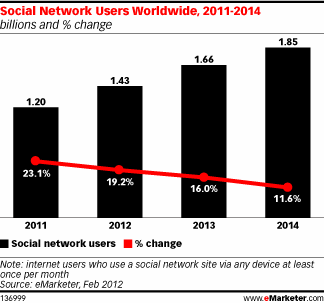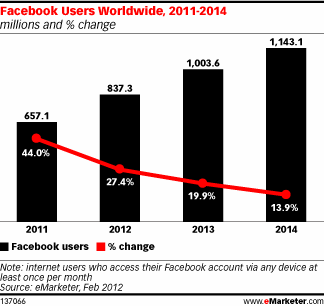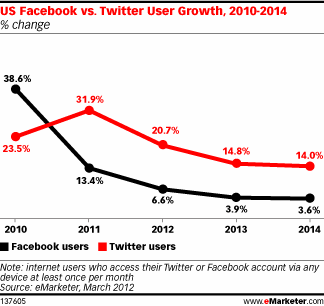Social networks provides people the possibility to communicate and to establish personal connections with other people from all around the world. This social networking phenomenon is one of those things we ask ourselves about “how could we leave without it before”.
It’s almost hard to believe that social networks have only been here for such a short while. Two of the most popular social networking sites are less than eight years old, Facebook founded on 2004 and Twitter founded on 2006, where most of their growth only occurred in recent years.
According to the research firm eMarketer, in 2012 there are 1.43 billion people who uses social networks on a monthly basis all over the world. It means that more than 20% of the total world population (with a 7 billion estimation) is social networking! And it is only predicted to expand furthermore.
The U.S. Census Bureau is predicting that by 2014 the world population will grow by about 2.2% to nearly 7.2 billion people. At the same period of time, social network users worldwide forecast to demonstrate a growth of about 30% to 1.85 billion people. That will already reflect a social networking reach of more than 26%!

Most growth of the social network users will be mainly attributed to developing world regions- By 2014, social network users in India will increase by close to 70% (to 129 million users), in Indonesia by 52% (to 79 million users) and in China by about 35% (to 414.5 million users) even though Facebook and Twitter are banned within the country.
The social network users growth rates in the Western world, where social networking reach is already high, are much lower- By 2014, social network users will grow in Western Europe by 17.5% (to 192.3 million users) and in the U.S. just by 8.2% (to 171 million users).
If we examine how many of the global social network users are in fact Facebook users, we will reveal how dominant is the most popular social network over the industry, a trend which only predicted to widen in the next few years due to outperforming user growth rates.
While in 2012, Facebook users constitute as slightly more than 58% out of the total social network users, by 2014 it would constitute as 61.2%. Facebook’s command over the whole industry is obviously also reflected in revenue where the percentages are almost perfectly correlated.

Just like the overall global trending, the main increase in Facebook users won’t come from the U.S. where it will show relatively low percentages growth rates in the next couple of years. eMarketer estimates that in 2012 it will benefit a growth of 6.6% (to 141.2 million users), in 2013 a growth of 3.9% (to 146.7 million users) and in 2014 a growth of 3.6% (to 152 million users).
For comparison, Twitter U.S. users increase by percentages in those years is much higher (although in lower number of users)- In 2012 by 20.7% (to 28.7 million users), in 2013 by 14.8% (to 33 million users) and in 2014 by 14% (to 37.6 million users).
